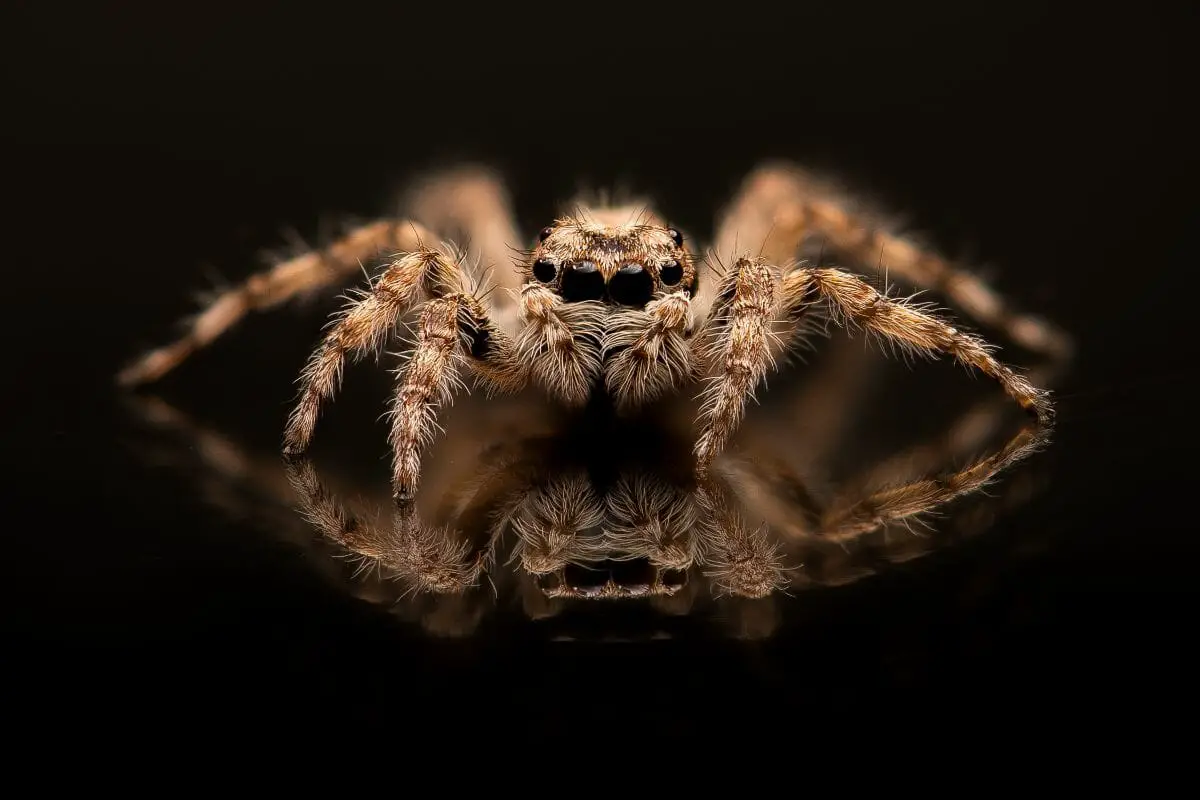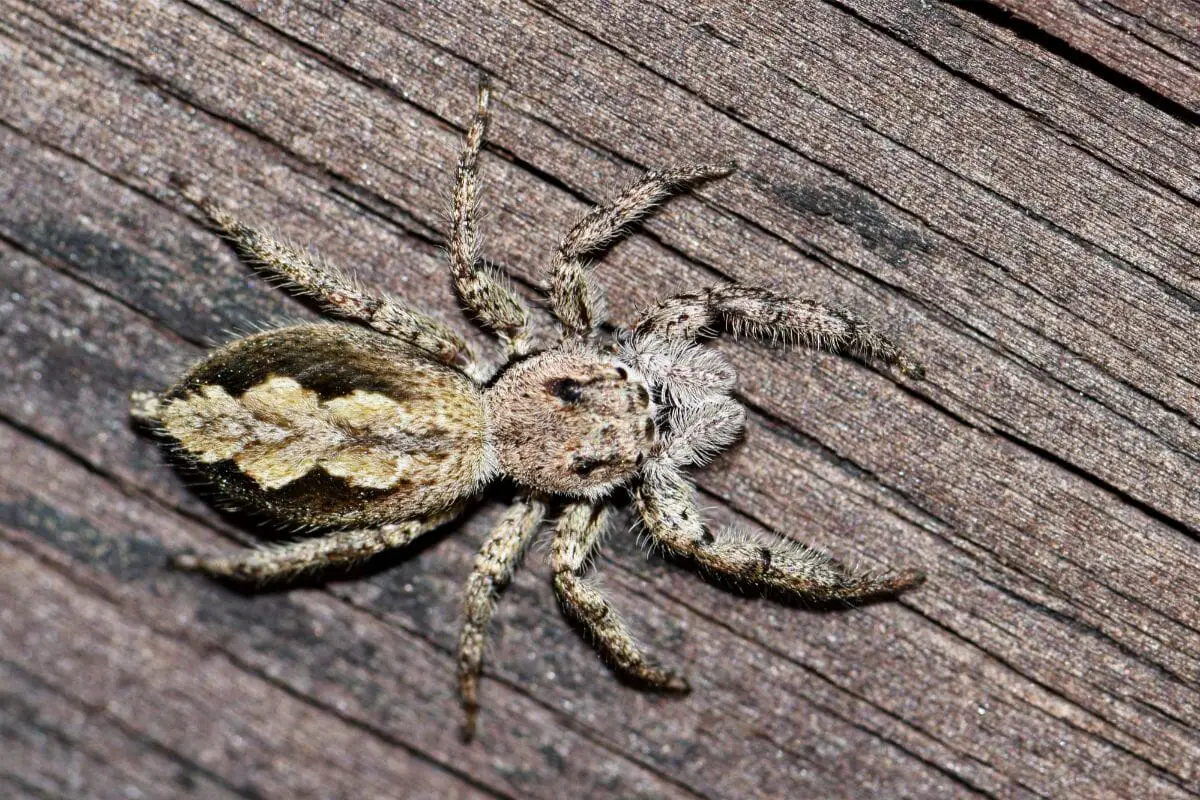Spiders are among the types of creatures that many people look upon with disdain and fear.

However, despite many different spiders having potentially frightening appearances and behaviors, they’re not all the same!
Jumping spiders do not necessarily equate to danger – however, there are some jumping spiders that are deadly!
Due to the complex nature of jumping spiders, there is a call for clarification.
So, we’ve decided to clear up some of this and give you some of the different types of jumping spiders. Read on to learn more!
What Is A Jumping Spider?
Even though many people categorize a spider as a bug or an insect, they are in fact separate beings.
Spiders are arachnids – which refers to the number of legs they have. Insects normally have six legs, whereas spiders (arachnids) have eight legs.
You may also be thinking to yourself, but I thought all spiders jumped?
Now, while it is true that many spiders have the ability to jump due to their DNA – not all spiders jump, and when we mention jumping spiders – we’re referring to spiders whose jumping ability provides it with its name or makes it notable.
It’s important that we note too that not all jumping spiders are dangerous and in fact, many people choose to keep them as pets! In truth, the real danger of jumping spiders is if you are allergic or their bite becomes infected.
While bites from jumping spiders are not common, and you are unlikely to encounter them in your home – they do produce a small amount of venom, and this can react negatively with some people.
However, the majority of people will recover with basic home treatment.
The Bold Jumping Spider
The bold jumping spider or Phidippus Audax to give it its latin term, is named as such because of its behavior and attitude.
This spider is very extroverted and can be described as having a bold personality – and this is uncommon with jumping spiders.
Normally, these jumping spiders are black with two very distinct and shiny green/blue fangs.
They live in North America primarily and enjoy a diet of insects, fruit flies and even smaller spiders!

Their jump is incredible. They have been recorded as jumping fifty times their body length – and this is assisted with the bonus of blood pressure that pumps through their fourth pair of legs!
The Tan Jumping Spider
Platycryptus Undatus or the tan jumping spider is a type of jumping spider that is native to Canada and the United States and tends to live in small areas within tree bark and other miniscule crevices.
Its name comes from its appearance as it has a tanned brown color and a prominent pattern of orange up to its thorax.
Their diet normally consists of crickets, tiny insects and earthworms.
This jumping spider has some similarities to the bold jumping spider, as it does not panic around humans.
In fact, this is one jumping spider that can be kept as a pet.
Many people report that these jumping spiders are quite happy to be scooped up and held in your hands.
Having said this though, they are also famous for their defensive bite when they are in danger – so ensure if you scoop them up into your hands, that you do not poke or squeeze them.
The Regal Jumping Spider
The regal jumping spider or Phidippus Regius is a big species of jumping spider that lives in the eastern areas of North America.
They are often found within the small crevices of walls like holes in bricks – or you can find them in wooded areas and open fields.
Males and females are easy to distinguish between one another.
Males have solid black bases with a connected pattern of white colored spots and stripes.
Females have a brighter pattern which is usually more orange in color and more often than not, this pattern shines.
This jumping spider normally eats a diet of small insects and crickets – similar to many jumping spiders, but this one does have some unique characteristics.

They spin a silky web and make a nest in wooded areas or in barns and sleep within them.
They wait until nighttime falls and the female will then lay their eggs.
The Zebra Jumping Spider
Salticus Scenicus or the zebra jumping spider is easily identifiable – and judging by its name, you can probably guess how and why!
This particular jumping spider lives in different continents, and can be found in the United Kingdom, the United States and different countries within Europe.
Over time, these jumping spiders have integrated into urban and highly populated areas – so they do not necessarily have much of a problem near humans.
When it comes to their behavior, they have been described as having a “cat” style of hunting.
This is likely through its tendency to work out distances and times to attack.
The Shiny Jumping Spider
The shiny jumping spider or Cosmophasis Umbratica is another type of jumping spider that gives you exactly the impression that you’d think by its name.
The best way you can describe its colors is from the movie Spiderman!
The colors of the superhero’s suit are reminiscent of this spider’s colors – reds and blues.
It has the uncanny ability to reflect ultraviolet light, and when it is exposed to ultraviolet light, it appears to exhibit dimorphism, which researchers believe is a type of sexual signalling from the spider.
So, Are They Dangerous?
Jumping spiders aren’t exactly dangerous, but their slightly venomous bite can be complicated due to allergies or infections, so it’s always best to seek medical advice if you suspect you have been bitten by a jumping spider.
The Bottom Line
There are many different types of jumping spiders and they’re all very interesting and beautiful creatures!
We hope our list has provided you with some great examples!








